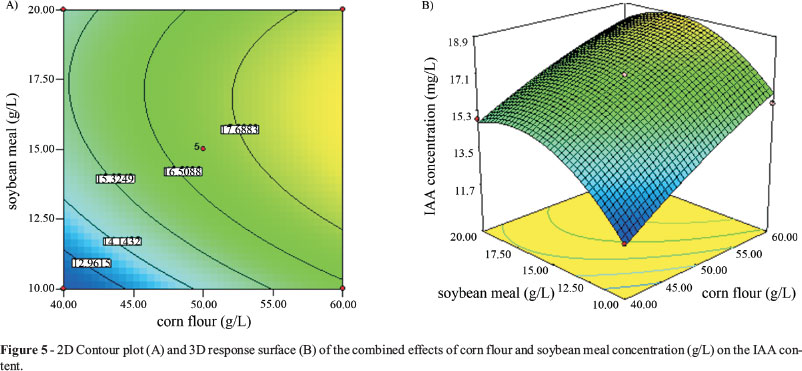The plant growth-promoting rhizobacterial strain Pseudomonas putida Rs-198 was isolated from salinized soils from Xinjiang Province. We optimized the composition of the low-cost medium of P. putida Rs-198 based on its bacterial concentration, as well as its phosphate-dissolving and indole acetic acid (IAA)-producing capabilities using the response surface methodology (RSM), and a mathematical model was developed to show the effect of each medium component and its interactions on phosphate dissolution and IAA production. The model predicted a maximum phosphate concentration in medium containing 63.23 mg/L inorganic phosphate with 49.22 g/L corn flour, 14.63 g/L soybean meal, 2.03 g/L K2HPO4, 0.19 g/L MnSO4 and 5.00 g/L NaCl. The maximum IAA concentration (18.73 mg/L) was predicted in medium containing 52.41 g/L corn flour, 15.82 g/L soybean meal, 2.40 g/L K2HPO4, 0.17 g/L MnSO4 and 5.00 g/L NaCl. These predicted values were also verified through experiments, with a cell density of 10(13) cfu/mL, phosphate dissolution of 64.33 mg/L, and IAA concentration of 18.08 mg/L. The excellent correlation between predicted and measured values of each model justifies the validity of both the response models. The study aims to provide a basis for industrialized fermentation using P. putida Rs-198.
Pseudomonas putida Rs-198; Low-cost medium; Phosphorus-dissolving; IAA; Response surface methodology















